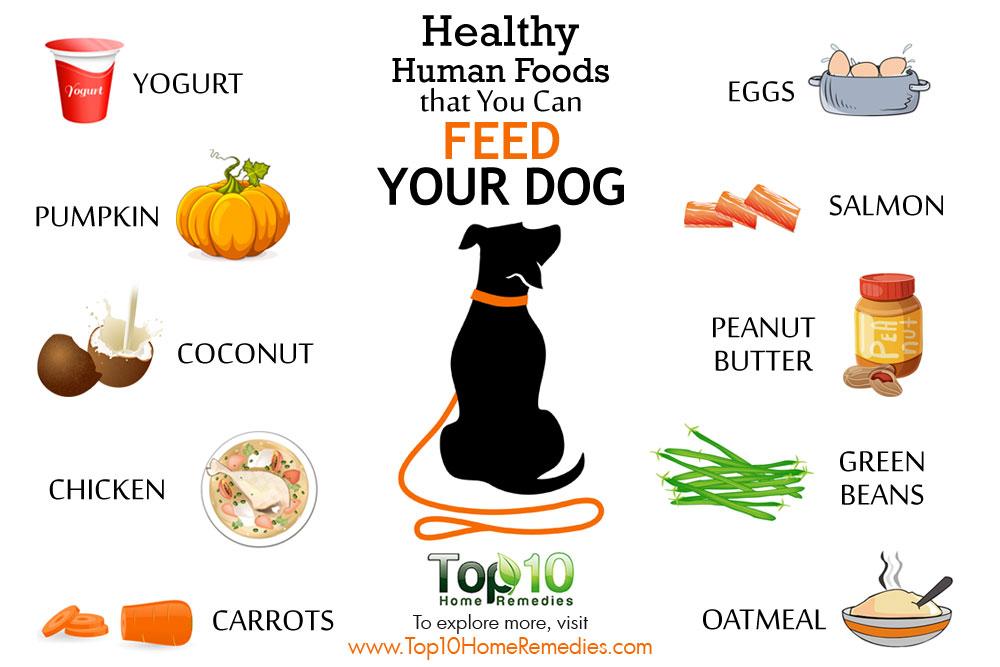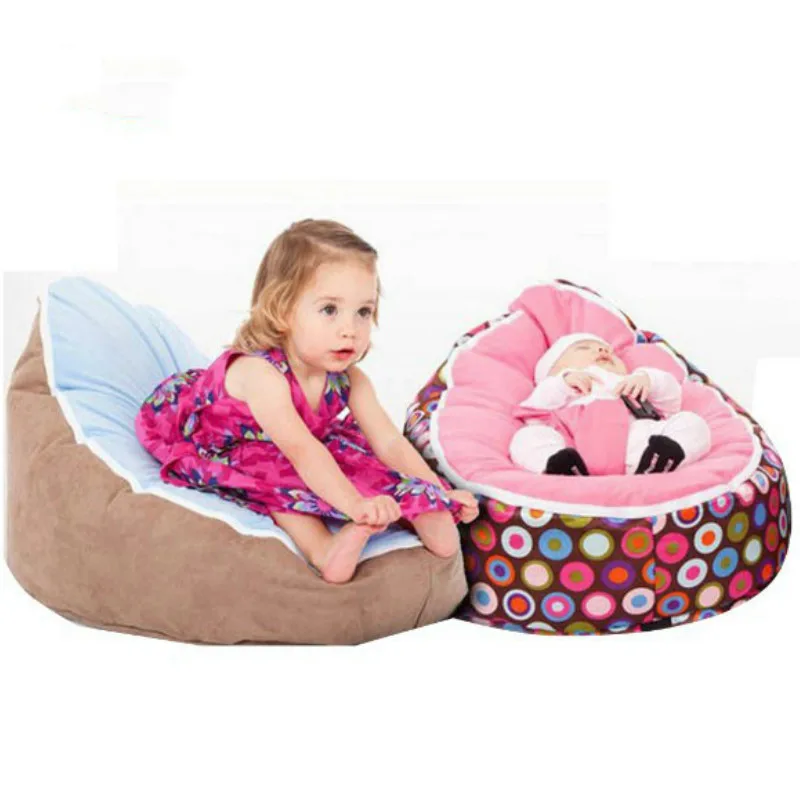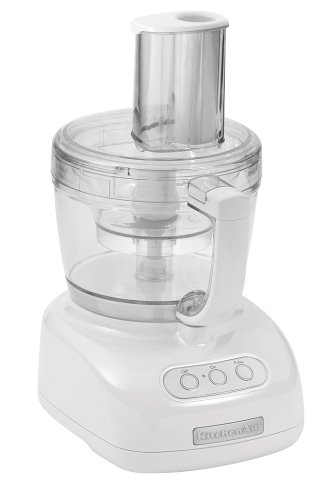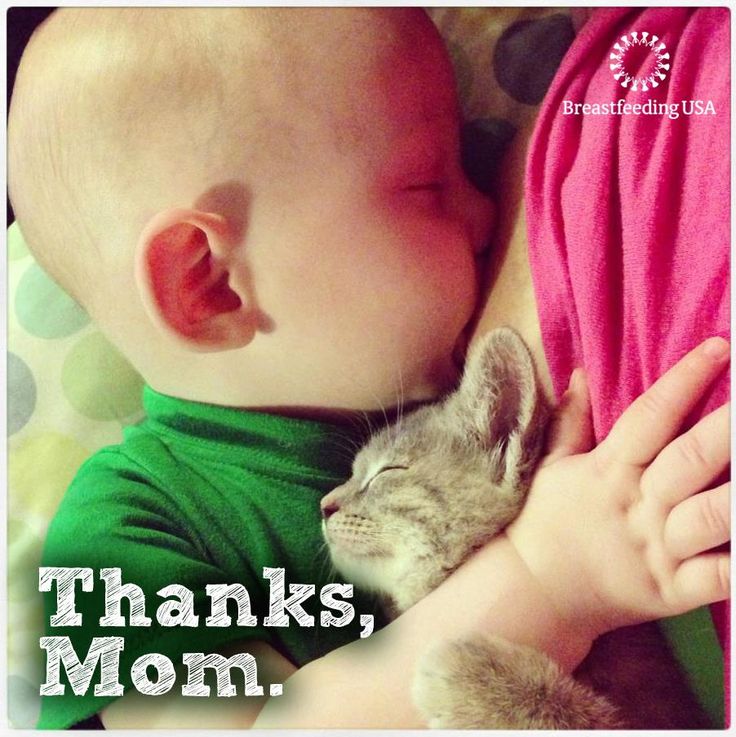Feeding baby birds formula
Instructions For Hand-Feeding Baby Birds
More Bird Topics ▼
The idea of a new baby bird in the family is an exciting proposition that brings a new dimension to your life. However, if you decide to hand-feed your new pet, you will need some knowlege, a lot of patience, and a good diet for a growing bird.
Veterinarians and naturalists have developed techniques for hand raising nesting birds, and
there are now easy-to-use special baby bird formulas for feeding the ever-hungry little babies.
Higgins Intune Baby Bird Hand Feeding Formula and
Higgins Intune Hi Energy Baby Macaw Hand Feeding Formula
are super foods that meet the extraordinary nutritional needs of these unusually fast
growing babies. It is rice based (sourced from North America) and corn free. inTune® Natural Hand Feeding uses natural and healthy, high end sources for nutritional fat like coconut oil and macadamia nut meal. It is also the only commercial hand feeding formula on the market with natural banana & mango aroma.
The need to cook the formula has also been eliminated. It
can now be prepared with hot water!
Most baby birds arrive in the world wet, naked, blind, and too weak to support themselves. When fallen from their nest, survival is questionable. Now, with help, they are able to grow and develop normally. Wild birds can be raised and returned to nature. Pet birds learn to accept people as friends. The real benefactors, though, are people. Nature returns many-fold for kindness performed.
Hand-Feeding
The most important considerations in the hand feeding process are the frequency
and volume of feeding. Baby birds grow at an extraordinarily rapid rate and this growth
requires a great deal of food to meet the nutritional needs of the bird. However, the crop
of a young bird holds a limited amount of food, so it must be filled frequently. As the
bird gets older, the capacity of the crop increases, and the number of daily feedings will
be reduced. The volume to be fed is base upon a combination of observation and judgement.
As the
bird gets older, the capacity of the crop increases, and the number of daily feedings will
be reduced. The volume to be fed is base upon a combination of observation and judgement.
Procedure
Check the Fullness of the Crop
Nature designed a rather unique feature into the digestive system
of birds-a widening of the oesophagus at the lower pan of the neck This
widening acts as a compartment to hold a quantity of food, and is named
the crop.
The crop can be easily visualized in young birds while feathering is incomplete. In older birds with a well developed covering of feathers, the fullness can be checked by gently feeling the crop with a thumb and index finger.
The crop should be examined before each feeding. Ideally, in the rapidly
growing young bird, the crop should never be allowed to become completely
empty. Checking the crop fullness will help determine the frequency
and volume of feeding to be given. Normally the crop will empty in 4
hours. A crop that remains full or is not emptying properly indicates
some type
of problem.
Checking the crop fullness will help determine the frequency
and volume of feeding to be given. Normally the crop will empty in 4
hours. A crop that remains full or is not emptying properly indicates
some type
of problem.
Position Bird for Hand-Feeding.
Wild birds are best fed while in a nest box. They will open their beaks and gape,
making feeding very easy. Avoid excessive handling of wild birds. Pet birds are removed
from the nest box and placed on a towel. By cupping a hand gently around the baby during
feeding , adequate support will be given to position him for eating.
Shop Avian Adventures Lifetime Cages
On Sale now. Free Shipping.
Carefully Introduce Feeding Device into the Mouth.
The introduction of an eye dropper or syringe into the mouth is
relatively easy, as the baby birds will be eager to be fed and will be gaping
(opening the beak wide in order to receive the feeding). Occasionally, a
bird may not gape, and gentle tapping of the beak with the feeding device
will encourage the bird to open its beak. The device should be carefully
passed into the left side toward the right side of the mouth.
Occasionally, a
bird may not gape, and gentle tapping of the beak with the feeding device
will encourage the bird to open its beak. The device should be carefully
passed into the left side toward the right side of the mouth.
Administration of the formula should be synchronized with swallowing. Birds swallow with an unusual rhythmic bobbing of the head up and down. While the bird is swallowing, the formula is delivered quickly. With practice, a "feet" for the procedure develops, and, done efficiently, the filling of the crop can be accomplished in a surprisingly short time.
Volume of formula to be Given
The volume of food given is of critical importance. overfilling of the crop could
lead to backflow up the oesophagus, into the throat, and down the windpipe, which could
cause death. Under-filling the crop might result in starvation.
As t he food material is being delivered, the crop will begin to fill
and bulge in the region of the lower neck. Careful observation and experience
are necessary in order
to determine when the crop is adequately filled.
Careful observation and experience
are necessary in order
to determine when the crop is adequately filled.
Frequently, the bird will stop gaping when the crop is filled; however, some birds, will continue to gape even when filled. Watch closely when filling for any evidence of food material backing up into the mouth. If this occurs, immediately stop until the mouth is cleared.
When the bird appears to have had enough feeding material, determine the state of fullness of the crop to make sure a sufficient amount of feeding was delivered.
Any excess food material on the skin, beak or feathers should he removed
with warm water when the feeding is complete. It can be followed with a
few drops of warm water to aid in "cleaning the mouth." Feeding
utensils should be cleaned immediately after use. Check the anus to be
certain no fecal matter has accumulated. Ideally, monitor the bird's weight
daily with an accurate scale. A healthy baby gains weight daily.
Ideally, monitor the bird's weight
daily with an accurate scale. A healthy baby gains weight daily.
Preparation of Baby Bird Formula
Follow the manufacturer's directions when mixing the formula.
Important: "Use distilled or boiled water to eliminate bacteria growth from contaminated tap water." The water should be approximately 105-110 degrees. Add the water to the powder gradually while stirring. After thorough mixing to eliminate lumps, the formula should be the consistency of creamy pudding. This thickness will allow it to be drawn into an eye dropper or syringe or will roll off a spoon. For older birds the mixture may be made thicker.
Do not reuse mixed formula. Discard and mix fresh at each feeding.
If really necessary, sufficient amount of formula may be prepared at one time to last 3
days if covered and refrigerated after preparation. The amount needed for each feeding can
be heated and fed but not reused. Caution: You might need to add water in the heating
process. Diluting formula by increasing water will reduce the concentration of the diet.
The amount needed for each feeding can
be heated and fed but not reused. Caution: You might need to add water in the heating
process. Diluting formula by increasing water will reduce the concentration of the diet.
Temperature to Feed Formula
The formula should be served warm- 104-106 F- but not hot, as excess
heat may damage the digestive tract. It should feel Slightly warm to the touch. It is
highly recommended to use a thermometer to measure the temperature.
In order to maintain the heat of the hand-feeding formula mixture, a double-boiler type arrangement can be set up with the container of prepared formula placed in a bowl or pan of warm water during the feeding process.
Feeding Area
Psittacine birds while being fed should be placed on a surface, such as a towel,
where there will be insulative properties to prevent excess heat loss and a surface where
they can grip with their feet, preventing slippage and possible injury.
Frequency of Feeding
Cockatiels and Small Parrots
Baby birds can be removed from their parents from between 8 to 21 days. Waiting
until 2 1/2 to 3 weeks is safer for the beginner, as the bird is hardier due to the
presence of some feathering.
Hatching to 1 week.
If the bird was removed from the nest shortly after hatching, for whatever
reason, feeding requires special care. There should be no attempts to feed the bird for at
least 12 hours after hatching. The crop is very small and will hold only a limited amount
of food. After continued use, it will expand. The first feeding at 12 hours should be one
drop of water. Approximately 1/2 to 1 hour later, another drop of water may be given.
Feeding too frequently during this period may overload the crop and lead to aspiration and
death.
After these initial feedings, if the baby appears normal and is excreting,
a few drops of very thin formula can be given. In order
that the baby bird receive enough food, the hand-feedings are repeated every two hours around the clock.
In order
that the baby bird receive enough food, the hand-feedings are repeated every two hours around the clock.
One to two weeks - Birds can be fed every 2-3 hours around the dock. If the birds are kept especially warm and comfortable, the night feedings after midnight can be eliminated. However, feedings must begin again at 6:00 AM.
Two to three weeks - This is a relatively safe age to remove the baby birds from the nest for hand-feeding. It is easier to check the crop and feed them. The birds of this age can be fed every three to four hours from 6:00 A.M. to midnight.
Three to four weeks - Feed the birds every 4 hours. As feeding frequency tapers off, the formula can be slightly thickened. At 4 weeks, the birds can be put in a cage with low perches. Water in a bowl may be placed inside.
Five to six weeks - Feed the birds twice daily. A pelleted bird food
and other foods may be placed in the cage to encourage the bird to eat on its own.
A pelleted bird food
and other foods may be placed in the cage to encourage the bird to eat on its own.
Seven weeks - Birds should be placed in a large cage with pellets in cups and scattered on the floor. Introduce the birds to a variety of succulent foods, but these should not make up more than 20% of the diet. Vegetables such as peas and corn are well accepted.
Weaning
Birds should not be weaned before 7 weeks, usually about 8 weeks. Before weaning
the bird off hand-feeding, keep close watch to see that the bird is actually eating
adequate amounts of pellets on its own and not merely nibbling at the food. Handle the
crop to determine the fullness and check the breastbone for degree of muscling. A weaning
bird may lose as much as 10% of it's weight normally. Any more than that may be an
indication of a problem. It is recommended that the bird be weighed regularly through this
period.
When first weaning the bird, give them pellets, as these are a nutritionally complete and balanced diet for the bird. It is a good idea to keep an older bird in a cage next to the cage with the young weanling to teach them to eat through mimicry.
If the baby birds are not weaned, they will become "spoiled" and will not eat on their own, preferring to be hand fed. However, if they are weaned too early, they will not eat adequately, gradually lose weight, become weak and die. Therefore, if baby birds are begging to be fed, even after they are weaned, there may need to be a reversal back to hand-feeding as they may not be eating adequately.
FREQUENCY OF HAND-FEEDING COCKATIELS and SMALL PARROTS
| Age in Weeks | Number of Daily Feedings |
0 |
Every 2 Hours (Around the Clock) |
| 1 | Every 2 Hours (Around the Clock*) |
| 2 | Every 3 Hours (6 a.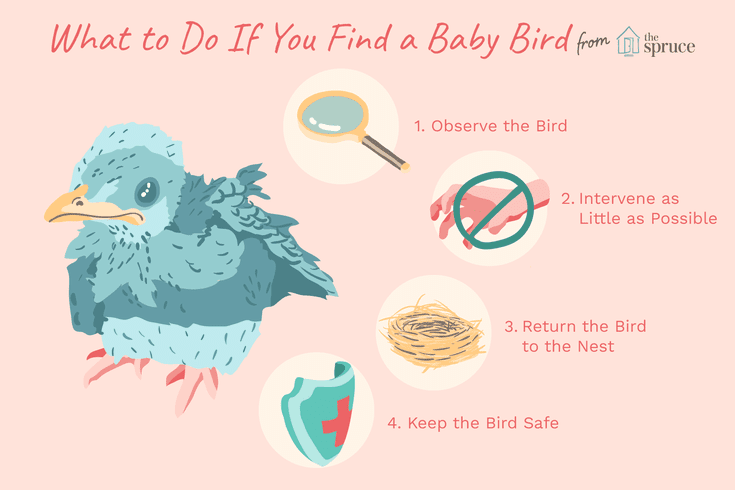 m. to Midnight) m. to Midnight) |
3 |
"Safest" Period To Begin Hand Feeding Every 4 Hours (6 a.m. to Midnight) |
| 4 | Every 5 Hours (6 a.m. to Midnight) |
| 5 to 7 | Two Feedings Daily |
*If bird is kept especially warm and comfortable, the 2 a.m. and 4 a.m. feedings can be eliminated.
Weaning Period - Important -
Make sure bird is eating adequately on its own before discontinuing hand-feeding. Check
fullness of crop.
Housing and Heat
A small cardboard box approximately 12" x12"xl2" or a small fish
aquarium with layers of paper towels over a one inch padding of cloth towelling on the
bottom will serve as an incubator and holding area while the babies are young. A heating
pad is placed under 1/2 of the box or aquarium. A towel is placed over the top. Either the
heating pad setting or the amount of the top that is covered by the towel may be adjusted
to provide a constant 85-90' for non-feathered birds. The temperature is gradually reduced
as they become feathered and mature. It is recommended to observe the babies carefully to
determine their comfort level. A cold baby will shiver and a baby that is too hot will not
sleep well and will breathe heavily through an open mouth. A bottle or tin filled with
water and holes punched in the lid to allow for evaporation will help to provide humidity.
A heating
pad is placed under 1/2 of the box or aquarium. A towel is placed over the top. Either the
heating pad setting or the amount of the top that is covered by the towel may be adjusted
to provide a constant 85-90' for non-feathered birds. The temperature is gradually reduced
as they become feathered and mature. It is recommended to observe the babies carefully to
determine their comfort level. A cold baby will shiver and a baby that is too hot will not
sleep well and will breathe heavily through an open mouth. A bottle or tin filled with
water and holes punched in the lid to allow for evaporation will help to provide humidity.
WILD BIRDS
Frequency of Feeding
The frequency and volume of feedings given to baby birds are largely determined
by their age. Judging the age of wild birds is difficult if untrained, so the best way to
determine feeding requirements is through the use of readily observable changes in the
bird. For example, whether or not the eyes are open, and if the bird is standing up
"off their hocks."
For example, whether or not the eyes are open, and if the bird is standing up
"off their hocks."
Before the eyes are open
If the baby birds appear strong and are peeping with their mouths gaping open,
then they can eat as much as they want. Ideally, baby birds of this young age should be
fed every 15-20 minutes until their eyes are open. They can go up to 30 minutes without a
feeding with no ill effects; however, more frequent feedings are preferred. They do not
require around-the-dock feeding as in nature, they are fed only during daylight hours. In
accordance with this, they are given feedings for a 12 hour period. Nonetheless,
hand-feeding wild birds is quite a commitment, as it requires nearly 50 feedings per day.
When the eyes are open
As the bird becomes older, the frequency of hand-feeding can be reduced and the
volume increased. Efforts can be initiated to get the bird to eat on its own. When a bird
initially opens its eyes, it can be fed every half hour unless hungry or peeping.
When a bird
initially opens its eyes, it can be fed every half hour unless hungry or peeping.
When birds are "off their hocks"
When birds become stronger and begin to stand on their legs ("off their
hocks'), then feedings can be given every 45 minutes. Time between feedings can steadily
increased, and when the bird is out of the nest, feedings can be given at 2 hour
intervals.
FREQUENCY OF HAND-FEEDING FOR WILD BIRDS
| Age | Number of Daily Feedings |
Before Eyes Are Open: |
Feed Bird Every 15 Minutes (12 Hour Period) |
| Eyes Are Open: | Feed Bird Every 30 Minutes (12 Hour Period) |
| Off Their Hocks | Feed Bird Every 45 Minutes (12 Hour Period) |
| Bird Out Of Nest: (Standing On Their Own) |
Feed Bird Every 2 Hours (12 Hour Period) |
*Wean at 15 Days
IMPORTANT-Bird must be eating adequately on its own.
Weaning
Wild birds should begin showing interest in their surroundings and start to eat
on their own by 15 days. Provide live food (meal worms) and grass, twigs, etc. in the nest
to stimulate interest in the environment. Spreading seed on the bottom of the nest will
also encourage the bird to eat on its own.
During the weaning period, it is critical to keep a close watch on the bird in order that good nutrition is maintained. Many times, a bird may be pecking at seed, giving the impression that it is eating, when in actuality, it is not taking in enough for maintenance. Therefore, it is very important to observe if the bird is eating seed during this period and regularly check the crop for fullness.
If other young birds who are eating on their own are present, placing
the baby bird in the same cage will hasten socialization, and the bird
will
learn to eat on its own through the
imitation of others.
Housing For Wild Baby Birds
Following nature's design, a nest is constructed. The sides are formed from cloth
rolled to a diameter of 1 1/2 inches and then forming a circular shape like a doughnut.
The nest would have a diameter of 4-8 inches, depending upon the number and size of
the babies. The 1 1/2' height makes the sides of the nest sufficiently high to keep the
babies in the nest, but low enough to allow the baby bird to scoot backwards and pass his
waste over the side of the nest.
Paper towels are placed in the bottom of the nest to a depth of 1/2 inch and then placed over the top of the entire nest. The towels are arranged to form a sloping surface which enables the bird to back up to the top of the nest to eliminate, and the paper towels can be easily replaced to maintain cleanliness.
Heat and Humidity
To provide heat in the nest box, a heating pad can be placed under half of the
nest and dialed to a setting which will maintain temperature of 85-90 degrees for non
feathered birds and gradually reduced as they become feathered. By placing heat under half
the nest, the bird is able to select the area where the temperature is most comfortable.
The box should be kept covered. A bottle or tin filled with water and holes punched in the
lid to allow for evaporation will help to provide proper humidity.
By placing heat under half
the nest, the bird is able to select the area where the temperature is most comfortable.
The box should be kept covered. A bottle or tin filled with water and holes punched in the
lid to allow for evaporation will help to provide proper humidity.
Caution
While raising wild birds is rewarding, please, do not make a wild bird a pet. For
more information contact your local Wildlife Agency, local Rehabilitation Center, Humane
Society, State Fish and Game Agency or the Federal United States Fish and Wildlife
Service.
Weaning Pet Birds With Avi-Cakes Food
Your pet birds have received a good start in life through the nutritional
benefits of Nutri- Start baby bird food. It is important to continue with high-quality
nutrition during the weaning stage and beyond. Lafeber's Avi-Cakes are an excellent
weaning food for your birds.
When birds reach the weaning stage, simply break Avi-Cakes into small
pieces and spread them near the babies. They will first investigate
the food; then, pick it up and start
self-feeding. (Supply fresh Avi-Cakes daily.) When the babies are eating
the Avi-Cakes you will first want to eliminate the middle of the day
hand-fed meal. As the birds continue
eating on their own, discontinue the morning and finally the evening hand-fed
meal.
They will first investigate
the food; then, pick it up and start
self-feeding. (Supply fresh Avi-Cakes daily.) When the babies are eating
the Avi-Cakes you will first want to eliminate the middle of the day
hand-fed meal. As the birds continue
eating on their own, discontinue the morning and finally the evening hand-fed
meal.
Since Avi-Cakes provide complete nutrition for pet birds, you may continue feeding Avi-Cakes or you may choose one of the other fine quality foods manufactured by Lafeber Company.
This bit of information was brought to you by Lafeber Bird Foods
Hand-Feeding Baby Birds | VCA Animal Hospital
General Information
Hand-feeding baby birds is only a substitute for parents raising birds, but it does have certain advantages. Hand-raised baby birds usually make better pets, as they have been completely socialized with humans. Hand-raised babies grow up with less fear of humans or other potential dangers such as cats, dogs and young children. Hand-feeding is a huge responsibility and requires time, patience, and commitment. Hand-fed baby birds are entirely reliant on you for everything. Hand-feeding is a job best left for the experienced bird breeder or aviculturist. If you’re considering hand-feeding a baby bird, you should contact your local bird breeder or veterinarian for help. This handout is designed to provide some basic guidelines on how to hand-feed.
Hand-raised babies grow up with less fear of humans or other potential dangers such as cats, dogs and young children. Hand-feeding is a huge responsibility and requires time, patience, and commitment. Hand-fed baby birds are entirely reliant on you for everything. Hand-feeding is a job best left for the experienced bird breeder or aviculturist. If you’re considering hand-feeding a baby bird, you should contact your local bird breeder or veterinarian for help. This handout is designed to provide some basic guidelines on how to hand-feed.
When do I start hand-feeding a baby bird?
A chick may be removed from its parents any time before weaning, but many suggest leaving the babies with the parents for up to 3 weeks. Older birds may prove to be more challenging in their acceptance of hand-feeding.
Where do I keep a baby bird?
Precise temperature and humidity is essential for optimum growth of newly hatched birds. Initially, relative humidity greater than 50% is required. Hatchlings (without feathers) should be maintained at 95°-97°F (35°-36°C). As the chick gets older and develops feathers, it has a greater tolerance for temperature fluctuations.
Generally, the temperature can be lowered by one degree every 2-3 days as feathering progresses. Chicks with new feathers (pinfeathers) should be fine at 75°-85°F (24°-30°C) depending on the development of the feathers. Fully feathered and weaned chicks can be maintained at room temperature. If you are raising a chick, always monitor your bird for signs of overheating or chilling. Wings extended or drooping, and panting indicate overheating. Shivering and cuddling of chicks together indicate that they’re cold.
Poor growth or poor digestion (delayed crop emptying) may indicate poor health (including presence of gastrointestinal tract infections), improper consistency/mixing of hand feeding formula, improper temperature of formula, or improper environmental temperature and humidity. Good quality brooders are available that carefully regulate air circulation, temperature, and humidity. Paper towel, diapers, hand towels, or other soft, disposable products can be used to line the bottom of the brooder and provide secure, clean, dry footing for birds. The bottom liner must be changed frequently to keep birds clean. If the bottom texture is too smooth, chicks’ legs may splay out sideways, leading to permanent deformities. The brooder should be carefully checked to ensure that it does not contain anything for birds to get their wings or legs stuck on or that might cause injury or deformities.
What should I feed my bird?
There are numerous commercially available hand-feeding formulas for baby birds. You should choose one formula and use it until the baby is weaned. Changes in diet may be stressful on the baby's digestion. Be sure to discuss dietary choices with your veterinarian, an experienced bird breeder, or an aviculturist.
How do I feed my baby bird?
All food must be prepared fresh for every feeding. Food retained from one feeding to another is an ideal medium for the growth of harmful bacteria and yeast. Any food prepared or heated in a microwave oven must be mixed thoroughly to ensure that the food’s temperature is uniform and that there are no hot or cold spots. Food temperature should be at 102°-106°F (39°-41°C) throughout the mixture and should be measured with a thermometer. Food that is too hot may cause severe burns to the crop.
Any food prepared or heated in a microwave oven must be mixed thoroughly to ensure that the food’s temperature is uniform and that there are no hot or cold spots. Food temperature should be at 102°-106°F (39°-41°C) throughout the mixture and should be measured with a thermometer. Food that is too hot may cause severe burns to the crop.
Food that is too cold may be rejected by baby birds and may slow down digestion. Hand-feeding formulas have specific directions on the packaging and explain how they should be mixed.
In general, the younger the bird, the thinner the mixture should be. A day-old chick requires a more dilute mixture (90% water), as it is still utilizing the yolk sac as a source of nutrition. Chicks older than one or two days, should have food containing approximately 70-75% liquid.
"All food must be prepared fresh for every feeding."
Syringes are probably the preferred feeding tool, but some bird owners still prefer a spoon with the sides bent up and inward. Accurate feeding volumes can be recorded with the syringe. Charting daily feedings is important. The natural feeding response of a baby bird is to rapidly bob the head in an up and down motion. This action can be stimulated with gentle finger pressure at the corners of the mouth. During this head bobbing, the trachea is closed and large amounts of food can be given relatively quickly.
Accurate feeding volumes can be recorded with the syringe. Charting daily feedings is important. The natural feeding response of a baby bird is to rapidly bob the head in an up and down motion. This action can be stimulated with gentle finger pressure at the corners of the mouth. During this head bobbing, the trachea is closed and large amounts of food can be given relatively quickly.
If the bird is not displaying a strong feeding response, do not attempt to feed as there is an increased chance of aspiration of food into the trachea and lungs which can lead to death. The best time to feed is when the crop is empty. When full, the crop, which is the sac that hangs over the front of the chest at the base of the neck, will be visibly distended.
How often and how much do I feed?
The amount and frequency of feeding depends on the age of the bird and the formula fed. The frequency of feeding for young birds is greater than that of older birds. The following are general guidelines. With newly hatched chicks, the yolk sac is the source of nutrients for the first 12-24 hours post-hatching. Chicks less than one week old should be fed 6-10 times per day (every 2-3 hours).
With newly hatched chicks, the yolk sac is the source of nutrients for the first 12-24 hours post-hatching. Chicks less than one week old should be fed 6-10 times per day (every 2-3 hours).
During the first week of life, some birds benefit from feeding during the night. Chicks that have not yet opened their eyes may take 5-6 feedings per day (every 3-4 hours). Once birds’ eyes open, they can have 3-5 feedings (one every 5 hours). As their feathers start to grow in, they may be fed 2-3 times per day (every 6 hours). Their crops should appear full when they’re done.
Feeding between 10:00 p.m. and 6:00 a.m. is not necessary at that point when birds are sleeping. The best indication of a healthy, growing chick is a good, strong feeding response at every feeding, with the crop emptying between feedings, and the regular production of droppings (feces). Weight gain should be monitored and recorded at the same time each day using a scale that weighs in grams with 1-gram increments to detect subtle increases or decreases. Birds’ weights may fluctuate up and down daily but should trend upward over a period of days to weeks. Birds that are not gaining weight should be checked by a veterinarian as soon as possible.
Birds’ weights may fluctuate up and down daily but should trend upward over a period of days to weeks. Birds that are not gaining weight should be checked by a veterinarian as soon as possible.
When should birds be weaned off hand-feeding formula?
Deciding when to wean a bird off of formula is often a difficult decision for both the bird owner and the bird. As a bird gets older and develops a full complement of feathers, it should be encouraged to wean off formula and to eat more on its own. Some babies start weaning themselves by refusing certain feedings.
Birds should be offered a variety of foods including formulated pelleted diets as well as fresh fruits and vegetables to encourage exploration and experimentation. As food introduction continues, hand-feeding may be withheld at certain times, often starting with the mid-day feedings. As time goes on, the morning feeding may be withheld and ultimately the evening feeding. Some birds learn quicker to eat on their own by watching other birds or older babies eat.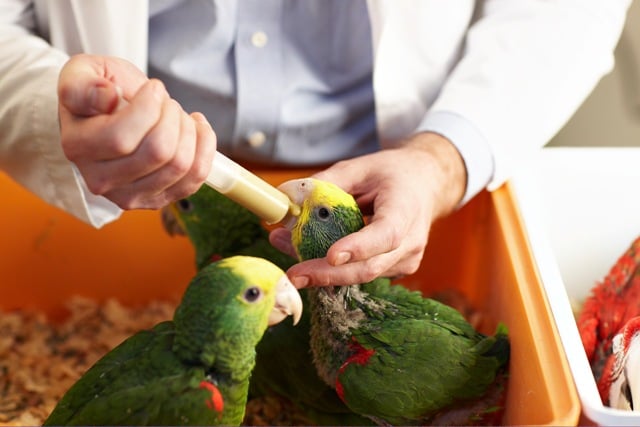
Should I be concerned about disinfection?
Baby birds have poorly developed immune systems and are more susceptible to developing infections. The brooder should be disinfected regularly. All feeding utensils must be cleaned, disinfected, and dried thoroughly between feedings. Using separate feeding utensils for every individual bird is recommended.
How do I know if something is wrong?
If you suspect something is wrong with your bird, you should immediately contact your veterinarian. Signs to watch for include:
- Chirping or crying all the time
- Fussing a lot and not sleeping
- Listless, droopy wings or head
- Not accepting food
- Lack of feeding response
- Slow or lack of crop emptying
- Poor weight gain
- Slow growth
- Abnormal posturing or abnormal wing and/or leg positions
- Abnormal or lack of droppings
- Wetness or food on skin over the crop (indicating a possible burn)
Feeding mixtures for cockatiel chicks
When breeding cockatiels, it may be necessary to feed or supplement chicks. In America, Kaytee's cornmeal-based feed is commonly used for this. In Europe, breeders use feeds such as Quikon and NutriBird.
In America, Kaytee's cornmeal-based feed is commonly used for this. In Europe, breeders use feeds such as Quikon and NutriBird.
NutriBird (already available in our country) is based on fine wheat flour with the addition of lactobacilli and enzymes similar to those produced by the goiter of cockatiel parents. nine0003
The numbers in the name of the feed of this company indicate the percentage of protein.
It is very easy to use ready-made dry food for artificial feeding of cockatiel chicks. They can be used instead of breadcrumbs in various egg mixtures used when feeding chicks by parents. Preparing liquid formula for feeding is also not difficult. Dry food is diluted with boiled warm (about 50 C) water to the consistency of thick sour cream. As soon as the mixture cools down to a temperature of 40-41C, it can be fed to the chicks. nine0003
For the first days cockatiel chicks are fed every 1.5-2 hours, week-old chicks should be fed every 3-4 hours.
Mix No. 1
1
Grated white crackers - 1.5 tablespoons, hard-boiled egg - 1 pc., Calcium gluconate - 2 tablets, glucose - 2 tablets, vitamin C - 1 tablet.
Pound tablets and dragees to a powder state, add grated crackers to them, mix the resulting mass thoroughly, then add a chopped chicken egg to it. Start giving the mixture to cockatiels as soon as the chicks hatch and give it daily until the last chick is 8-10 days old. nine0003
Chicks need special nutrition
Mix No. 2
Semolina - 2 tablespoons, powdered milk formula with oatmeal for baby food - 1 tablespoon, hard-boiled egg - 2 pcs., Calcium glycerophosphate - 3 tablets, glucose - 3 tablets.
Grind the tablets into powder, add dry milk mixture and semolina to them and mix, then chop the eggs and mix the finished mass again.
Mix No. 3
Semolina - 3 tablespoons, grated carrots - 1 tablespoon, powdered milk formula for baby food - 1 tablespoon, hard-boiled egg - 1 pc., Calcium gluconate - 1 tablet, calcium glycerophosphate - 1 tablet, fortified fish oil - 4 -5 drops.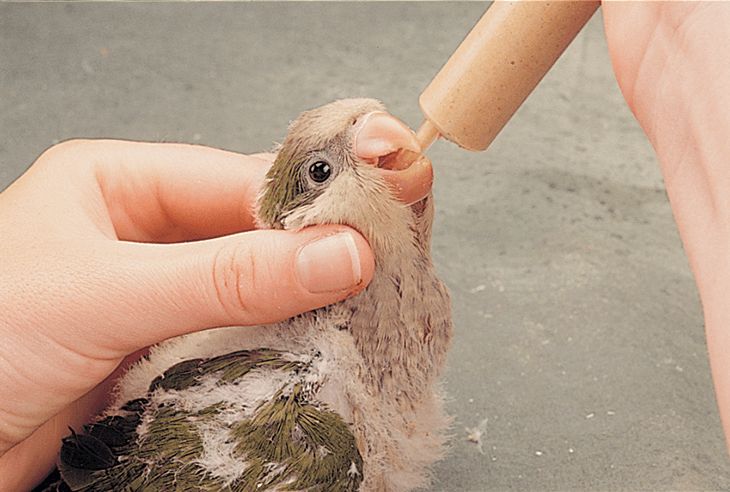 nine0003
nine0003
Grind the tablets to a powder, add the dry milk mixture, semolina and mix thoroughly. Then add chopped egg. Enter fish oil into grated carrots and mix it with the rest of the ingredients. This mixture is intended for feeding chicks at the age of 3-4 weeks.
Growing chicks are given 1 teaspoon of the mixture every day. Fish oil is added to the feed no more than 1 time per week.
There are couples where the birds may not initially feed the chicks. or then refuse. Also, it is necessary to take the chick if the parents begin to pluck. nine0003
You can buy Heinz Dairy-Free 7-Grain Infant Formula, plain buckwheat without additives. dilute to a creamy state (so that it is not liquid and not thick) In this mixture, add a little boiled egg and 1 drop of ampoule calcium gluconate, also carrot juice.
You can cook your own porridge without salt and sugar. Steam buckwheat in a container - pour boiling water 2 times and cover. Also add a little boiled egg, 1 drop of gluconate and carrot juice - 3-4 drops. Pass all this through a blender. nine0003
Pass all this through a blender. nine0003
Formula-fed chicks should be kept warm at 25-30°C for two weeks. A cardboard box with a heated bottom is quite suitable for this. Since the chicks do not yet have plumage, they are not able to maintain body temperature. And if the temperature at the bottom is too high, it will cause anxiety for the chicks, they will start to suffocate. Lower the temperature or place a towel between the heated bottom and the chicks. Keep the lid of the box closed. Poultry farmers sometimes use an electric incubator for this. nine0003
After hatching, the parrots should be placed with some good pair, since all parrots feed their chicks with secretion from the crop in the first days of life. These are the most difficult and responsible days in the life of the chicks. When the chicks open their eyes, and this is on the 10-12th day, and begin to eat solid food, they can already be fed semi-liquid porridge cooked from the “Kid” milk mixture with semolina and oatmeal. This mixture contains all the necessary nutrients for chicks. When feeding, the chick is held in the left hand, and food is brought with the right. The porridge should be warm - the chicks will not eat the cooled porridge. nine0003
This mixture contains all the necessary nutrients for chicks. When feeding, the chick is held in the left hand, and food is brought with the right. The porridge should be warm - the chicks will not eat the cooled porridge. nine0003
Parrots quickly get used to the feeding regime and already recognize the food from a distance. It is better to feed them from a teaspoon. Soiled chicks should be cleaned of food debris. Immediately after feeding, they are treated with a cotton swab or soft cloth. Particular attention should be paid to the beak - it should not have dried food, which makes feeding difficult. Feed the chicks should be until full, every 2.5-3 hours, 6-7 times a day from 6-7 to 23-24 hours. Their crops should be well filled, but overfeeding should be avoided. After feeding, the chicks are placed in a box where they are until the time comes to learn to fly (then they are transferred to a cage). nine0003
If the chicks take food well and show a healthy appetite, after a few days you can start giving them additional food - a little pureed greens, apples or carrots are mixed into the porridge. Over time, they are given an increasingly steep porridge, 2-3 times a week adding mineral feed to it (0.5 tablets of calcium glycerophosphate, medical activated carbon per chick), after grinding them into powder. As vitamin supplements, freshly prepared juices (apple, carrot) are given along with water, and a small amount of natural bee honey is added to the porridge. Once or twice a week, fish oil is added to the porridge (1 drop per 1 teaspoon) or finely chopped multivitamin preparations thoroughly mixed with porridge (0.5 tablets per chick every other day). nine0003
Over time, they are given an increasingly steep porridge, 2-3 times a week adding mineral feed to it (0.5 tablets of calcium glycerophosphate, medical activated carbon per chick), after grinding them into powder. As vitamin supplements, freshly prepared juices (apple, carrot) are given along with water, and a small amount of natural bee honey is added to the porridge. Once or twice a week, fish oil is added to the porridge (1 drop per 1 teaspoon) or finely chopped multivitamin preparations thoroughly mixed with porridge (0.5 tablets per chick every other day). nine0003
It is harder to feed the chicks when they are already flying - they are stubborn and shy. At this time, a little millet is added to the porridge, previously thoroughly cleaned of debris and washed several times with boiled water, and a drinking bowl with water is placed in the cage, grain feed is poured. Gradually, the birds themselves begin to peck the grain, take the leaves of plantain and other plants in their beaks. But, despite this, it is necessary to check from time to time whether they want to eat (from a spoon).
But, despite this, it is necessary to check from time to time whether they want to eat (from a spoon).
Human-fed cockatiels become completely tame and become strongly attached to the owner. They are especially well trained and learn to imitate human speech. nine0003
How to feed parrot chicks - mixture recipes, recommendations
During the feeding period, especially in the first two weeks, wet mixture is the main component in the daily diet of parrots (70-80%).
Mix options for parrots during chick-rearing
Mix "D"
- Hard-boiled chicken egg 1;
- Grated white crackers or dry biscuits 1.5 tablespoons;
- Calcium gluconate or glycerophosphate 2 tablets; nine0061
- Glucose 2 tablets;
- Vitamin C 1 tablet.
Scheme for preparing the mixture
- Tablets and dragees are ground into powder.
- Add grated dry biscuits or white crackers.
- Mix everything very well.

- The hard-boiled egg is minced and mixed with the powdered mixture so that all the egg pieces are well coated in the dry mixture.
Feeding chicks and adult birds
As soon as the chicks hatch, the mixture is given daily until the last chick is 8-10 days old (one day they give the mixture with biscuits, the second with white breadcrumbs). This amount of the mixture is enough for two families of budgerigars or azure parrots with 4-6 chicks, or for a pair of cockatiels with 4-5 chicks. nine0003
A day or two before the chicks appear, fruits and greens are completely excluded from the diet of adult birds. Hemp is completely excluded from the grain feed (until the chicks grow up), the rate of the grain mixture is increased as the number of chicks is added.
Variants of mixtures for adult birds during the feeding period of older chicks (20-30 days)
Mix "E1"
- Hard-boiled chicken egg 2;
- Grated white crackers or semolina 2 tablespoons; nine0061
- Powdered milk formula with oatmeal for baby food 1 tablespoon;
- Glucose 3 tablets;
- Calcium glycerophosphate 3 tablets.

How to prepare the mixture
- Powder tablets.
- Add powdered milk mixture and semolina or white crackers.
- Mix thoroughly.
- Chop the eggs separately and mix thoroughly.
Feeding chicks and adult birds
The prepared mixture is enough for two or three families of budgerigars, lovebirds or a family of cockatiels or necklace parrots. During this feeding period, adult birds should receive part of the grain feed in the form of corn or steamed oats and germinated wheat without soil, in addition to the mixture that is given daily (alternating semolina and crackers). nine0003
Formula for rearing chicks at the age of 3-4 weeks and chicks during their independent stay during the first month of life in a passage cage
Mix "E2"
- Hard-boiled chicken egg 1;
- Grated carrots 1 tablespoon;
- Semolina or grated white crackers 3 tablespoons;
- Powdered infant formula 1 tablespoon;
- Calcium glycerophosphate 1 tablet;
- Calcium gluconate 1 tablet; nine0061
- Trivitamin 2-3 drops;
- Vitaminized fish oil 6-7 drops.

How to prepare the mixture
- Tablets are ground into powder.
- Add powdered milk mixture, grated white crackers or semolina.
- Mix thoroughly.
- The crushed egg is mixed with the powdered mass.
- Trivitamin or fish oil is added to grated carrots.
- Mix thoroughly and then mix with all other components. nine0061
- If the mixture turned out to be very viscous, then add semolina or grated crackers, and if it is too dry, then carrots or rosehip extract.
How to give mixture to parrots
Small and medium parrots are given one dessert spoon per bird every day. Trivitamin or fish oil is included in the diet no more than twice a week.
In mixtures containing biscuits, grated crackers, cereals, do not include table salt, and in mixtures that do not contain these components (semolina is included), add two or three grains of salt the size of a millet grain each, after grinding it together with tablets. Once or twice a week, instead of this mixture, parrots are given a mixture that includes boiled potatoes. nine0003
Once or twice a week, instead of this mixture, parrots are given a mixture that includes boiled potatoes. nine0003
It is necessary to draw up a menu depending on the season for a week, a month, and in addition to the grain mixture that is given daily, periodically introduce other feeds. The following are approximate weekly rations (by season) for non-breeding birds.
Approximate weekly rations (by season) for non-breeding birds
Feeding parrots in the spring
- 1st day - grain mixture, wet mixture "A", seedlings of millet, oats.
- 2nd day - wet mixture "B", grain mixture, biscuits, needles, oat or millet seedlings, finely grated beets. nine0061
- 3rd day — wheat grains germinated without soil, grain mixture (full daily allowance), shoots of oats, millet, add cottage cheese to the grain mixture.
- Day 4 - Moist "A" mix, grain mix, grated beets instead of water, grass meal or dried nettles.
- 5th day - rosehip decoction, grain mixture, bread or crackers soaked in tea with honey or milk, steamed corn, nuts, oat shoots.

- Day 6 - Wet Mix "B", Grain Mix, Steamed Oats, Grass Meal, Needles - into Grain Mix. nine0061
- 7th day — unsown wheat grains, grain mixture (full daily allowance), tangerine or orange slices, rosehip decoction — instead of water.
- Once or twice a week, the birds are given fasting days, in which they are given only a grain mixture (full daily allowance) and greens.
- On other days, the norm of the grain mixture in the diet is reduced by 1/4.
Feeding parrots in summer
- 1st day - roll or white bread soaked in tea with sugar or honey, grain mixture, cottage cheese, dandelion leaves, wood lice or clover. nine0061
- Day 2 - Wet mix "A", grain mix, lettuce or spinach.
- Day 3 - fresh cucumber or tomato slices, grain mixture (full daily allowance), dandelion leaves.
- Day 4 - Moist Blend "B", Cereal Blend, Apple Slices, Dandelion Leaves, or Immature Psyllium Spikelets.
- 5th day - wet mixture "B", grain mixture, grated carrots, nuts, woodlice, dandelion leaves.
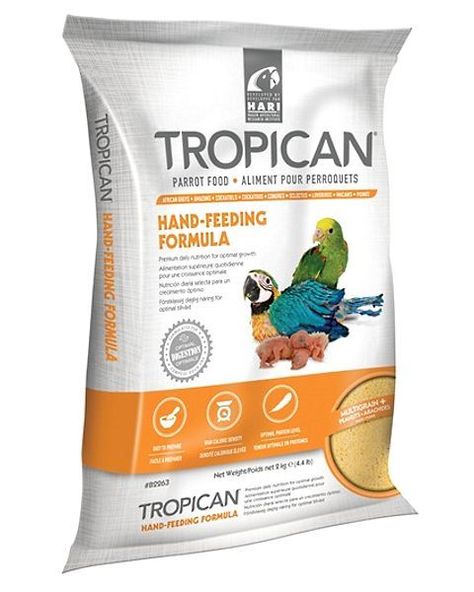
- 6th day - wet mixture "B", grain mixture, white crackers soaked in milk, dandelion leaves, spinach. nine0061
- 7th day - nuts, berries, grain mixture (full daily allowance), cabbage leaves, lettuce.
Feeding parrots in autumn
- 1st day - wet mixture "A", grain mixture, cabbage leaves, wild berries.
- 2nd day - white bread or roll soaked in milk, cereal mixture, apple, watermelon or melon slices, grapes.
- 3rd day — unsown wheat grains, grain mixture (full daily allowance), cabbage leaves, spruce needles. nine0061
- 4th day - apple or pear slices, grain mixture, rowan berries.
- 5th day - wet mixture "B", grain mixture, nuts, cottage cheese, cabbage leaves.
- Day 6 - dry biscuits, cereal mixture, white crackers soaked in tea with sugar or honey, grated carrots, apple or pear slices.
- 7th day - nuts, spruce needles, grain mix (full daily allowance), wheat germinated without soil, cabbage leaves.
Feeding parrots in winter
- Day 1 - Wet mix "A", grain mix, baby oats, steamed corn, millet.



